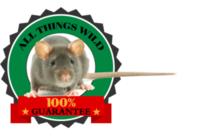[et_pb_section admin_label=”section”][et_pb_row admin_label=”row”][et_pb_column type=”4_4″][et_pb_text admin_label=”Text”]
Generally, Wildlife is a term reserved to describe any animal life other than domesticated and farm animals. Dogs, Cats, horses, cattle, and goats are not considered wildlife. As far as common wildlife present in South Carolina, there is a lot to choose from. South Carolina’s significantly different habitats stretching from spartina marsh in Charleston, to the Blue Ridge Mountains, provide many different flora and fauna zones. Each of these zones is unique and has its own common wildlife. Some wildlife species only exist in one or two habitat types. This limits the range of these animal species, like many of the salamanders found only in the mountain streams and forests. Many species are generalists and exist across many habitat types, the whitetail deer is a generalist. Fish, birds and reptiles, mammals and amphibians, even insects are wildlife.
Native wildlife is a difficult term to define for many common species today. So many once “exotic” species have been introduced and are thriving, that they have become a part of the native flora and fauna. These species have been here so long, we forget that they were once exotic species. The Red Fox and Brown Trout are two perfect examples of once exotic species that are just called wildlife now.
When wildlife is left to its own, the circle of life constantly revolves. Populations grow and fall in response to factors such as food supply, disease, predation, and carrying capacity. When wildlife interact with man, these interactions become slanted towards the people. People are generalists like many other animal species. We are fighting for our own piece of the habitats around us. When we build homes and structures, we must protect them from wildlife infestations that can harm us, our families, and the structures we build. Animals do not need to have shelter as elaborate as human dwellings. They are happy to share it, but are usually not good house guests.
Wildlife Biology is the study of how animal species interact with each other and their surrounding habitats. This science is of paramount importance when dealing with wildlife-human interactions. Most people don’t really understand the motivations and routines of wildlife species. This lack of understanding often leads to assumptions about the animal’s intentions. Wild animals also bring about a primal reaction from many people. These two trends lead to a need for wildlife biology when one is handling wildlife-human problems.
Man’s biggest blunder in dealing with wildlife is our attempt to give animals human emotion and motivations. This assumption of human motivations leads many people to either trust too little (and kill the wildlife species out of fear), or to trust too much which results in people being harmed/killed by the wildlife that they underestimate.
[/et_pb_text][et_pb_cta admin_label=”Call To Action” saved_tabs=”all” title=”Call Us Today! 843-754-5444″ button_url=”tel:8039203880″ url_new_window=”on” button_text=”Click to Call” use_background_color=”on” background_color=”#135028″ background_layout=”dark” text_orientation=”center” use_border_color=”off” border_color=”#ffffff” border_style=”solid” custom_button=”off” button_letter_spacing=”0″ button_use_icon=”default” button_icon_placement=”right” button_on_hover=”on” button_letter_spacing_hover=”0″]
[/et_pb_cta][/et_pb_column][/et_pb_row][/et_pb_section]


